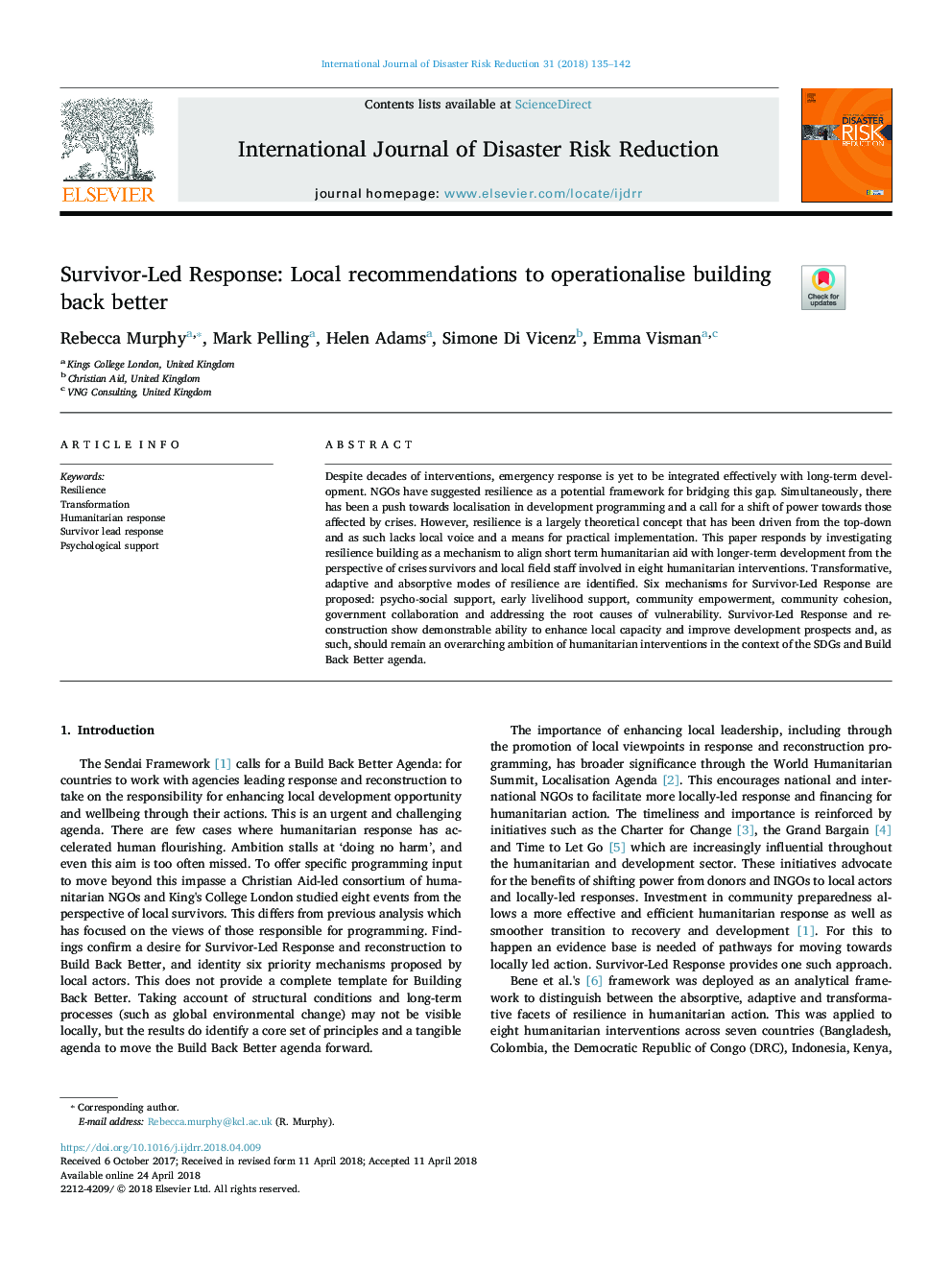| Article ID | Journal | Published Year | Pages | File Type |
|---|---|---|---|---|
| 7471032 | International Journal of Disaster Risk Reduction | 2018 | 8 Pages |
Abstract
Despite decades of interventions, emergency response is yet to be integrated effectively with long-term development. NGOs have suggested resilience as a potential framework for bridging this gap. Simultaneously, there has been a push towards localisation in development programming and a call for a shift of power towards those affected by crises. However, resilience is a largely theoretical concept that has been driven from the top-down and as such lacks local voice and a means for practical implementation. This paper responds by investigating resilience building as a mechanism to align short term humanitarian aid with longer-term development from the perspective of crises survivors and local field staff involved in eight humanitarian interventions. Transformative, adaptive and absorptive modes of resilience are identified. Six mechanisms for Survivor-Led Response are proposed: psycho-social support, early livelihood support, community empowerment, community cohesion, government collaboration and addressing the root causes of vulnerability. Survivor-Led Response and reconstruction show demonstrable ability to enhance local capacity and improve development prospects and, as such, should remain an overarching ambition of humanitarian interventions in the context of the SDGs and Build Back Better agenda.
Related Topics
Physical Sciences and Engineering
Earth and Planetary Sciences
Geophysics
Authors
Rebecca Murphy, Mark Pelling, Helen Adams, Simone Di Vicenz, Emma Visman,
